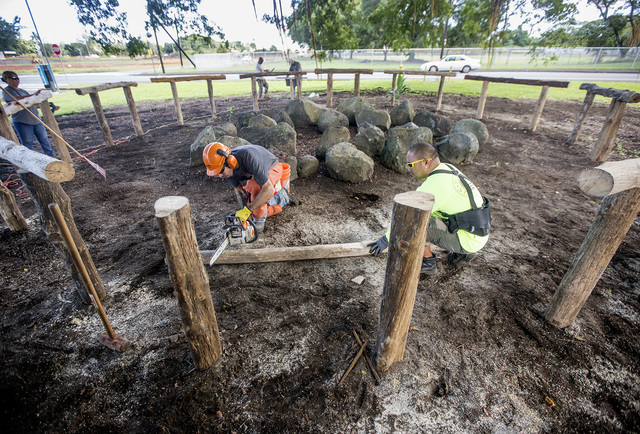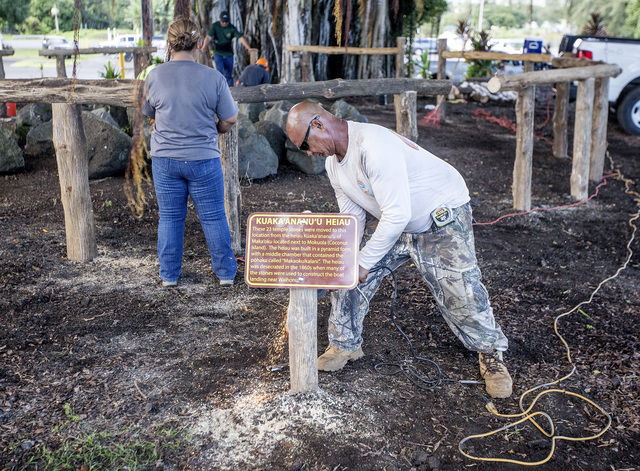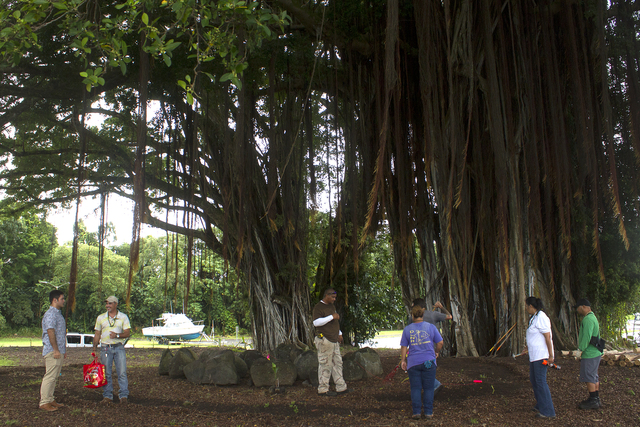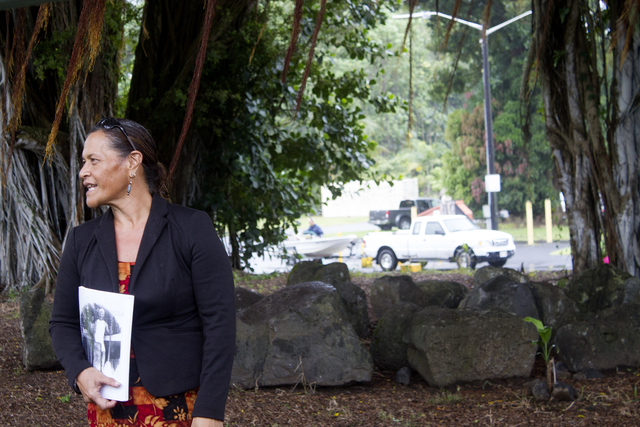Two decades of detective work paid off for Terri Napeahi. ADVERTISING Two decades of detective work paid off for Terri Napeahi. Twenty-three boulders located beneath a large banyan tree near the Wailoa River boat landing are being officially identified as
Two decades of detective work paid off for Terri Napeahi.
Twenty-three boulders located beneath a large banyan tree near the Wailoa River boat landing are being officially identified as stones from the middle chamber of the Kuaka‘ananu‘u Heiau once located near Moku Ola.
The Division of State Parks of the Department of Land and Natural Resources is installing fencing and signage around the stones to mark and protect the site from vehicles and other damage, said state parks archaeologist and interpretive program manager Martha Yent.
For Napeahi, who tried for years to locate the stones and ensure their story wasn’t forgotten, the protection was a “momentous occasion.”
“My responsibility, our responsibility as Hawaiians, is to be able to keep our traditions alive,” she said Tuesday morning during a brief ceremony beneath the banyan hosted before the fencing work began. The ceremony included mele and oli by Ke Ana La‘ahana Public Charter School. Halau Kahulaliwai assisted with preparations for the event.
Knowledge of the stones is “based on oral history and some written literature rather than archaeology,” Yent said in an email to the Tribune-Herald.
The Kuaka‘ananu‘u Heiau was 60 feet tall and built in a pyramid shape. It was desecrated in the early 1800s — the culprits are unknown, Napeahi said. According to state historical records, it was dismantled by Capt. Thomas Spencer of ‘Amauulu Sugar Plantation in the 1860s to build a wharf.
Some stones also were used as filler for the landing near Liliuokalani Gardens, where Hilo Bay Cafe is currently located, Napeahi said.
But the 23 stones from the middle chamber of Kuaka‘ananu‘u were moved to land owned by David Napeahi, Terri Napeahi’s great-grandfather, where they stayed for the next 200 years. It’s unknown how the stones were first moved, Napeahi said.
She became interested in the stones at a young age, after seeing an old photograph of her great-grandfather and her great-great-grandfather, George Kahilihiwa Kekaula, posing in front of what Napeahi said she later identified as the central heiau stone.
Years later, using old property maps, land transfer records and the writings of Theodore Kelsey, who took the original photograph of Napeahi’s relatives, Napeahi was able to determine the heiau stones were located near the boat landing. The verification process took about 10 years, she said.
In the past year, the stones were moved from their second home to beneath the banyan tree as part of a Hilo harbors project, at which point Napeahi said work with the state to protect them from further transport began in earnest.
Yent said heiau stones being removed and used for construction project was once “a common occurrence” in Hawaii, particularly in the latter part of the 1800s.
“We rarely know exactly where the stones went,” she said.
In one instance, Parker Ranch employees notified the state about stones taken from Kukuipahu Heiau in North Kohala. Those stones were returned to the site.
“Much of this knowledge is with the community rather than any written documents,” she said.
“It’s such a rich history, and it’s not being told,” Napeahi said. “This is the beginning.”
Email Ivy Ashe at iashe@hawaiitribune-herald.com.






